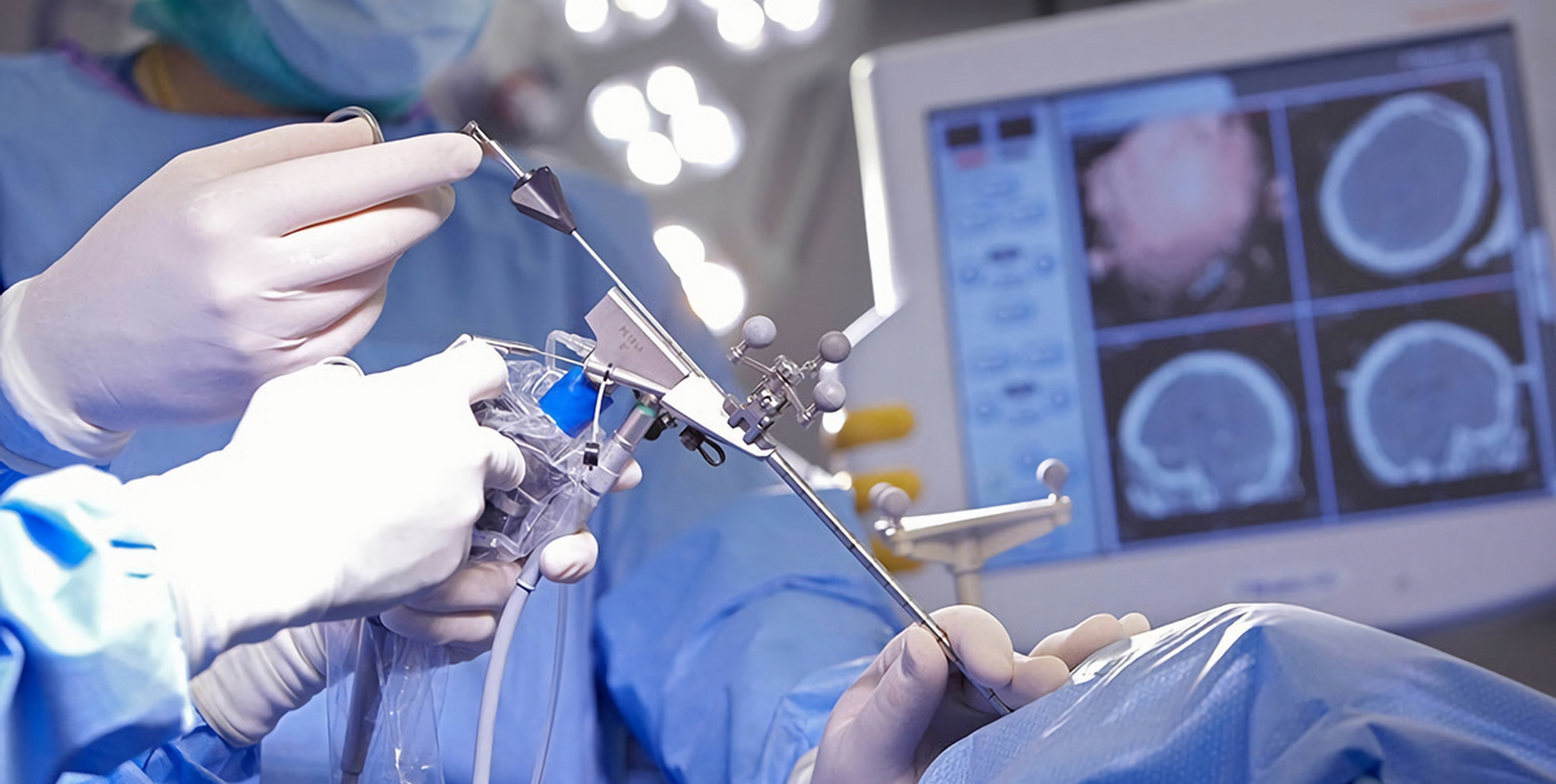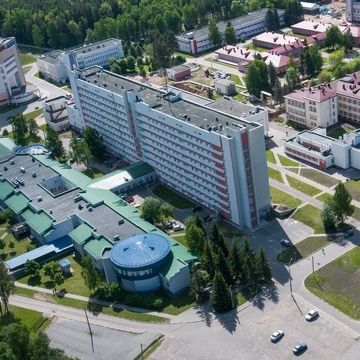
Endoscopic neurosurgery
Endoscopic neurosurgery is a modern minimally invasive surgical intervention method that uses endoscopic instruments to treat diseases of the brain and spinal cord. This technique allows complex operations to be performed with minimal damage to surrounding tissues.
Benefits of Endoscopic Neurosurgery
- Minimally invasive. Small incisions reduce tissue trauma.
- Shortened rehabilitation period. Patients return to normal life faster.
- High precision. The endoscope provides an enlarged and detailed image of the surgical field.
- Reduced risk of complications. Blood loss and damage to healthy structures are minimized.
- Aesthetic effect. Fewer visible scars.
Main areas of application
- Brain diseases. Removal of tumors (e.g. pituitary adenomas). Treatment of brain cysts. Endoscopic third ventriculostomy (for the treatment of hydrocephalus).
- Spinal pathologies. Removal of intervertebral disc herniations. Treatment of spinal cord cysts and tumors.
- Traumatic brain injuries. Elimination of intracranial hematomas.
- Neurovascular diseases. Treatment of aneurysms and arteriovenous malformations.
- Skull base pathologies. Removal of neoplasms through the nasal sinuses (endoscopic transnasal surgery).
Equipment and machinery
- Endoscope. A thin, tubular instrument with a camera and light source. Allows the surgeon to see a magnified image on a monitor.
- Instruments. Microsurgical instruments for manipulation through small incisions.
- Navigation systems. 3D navigation technologies for precise localization of pathology.
- Additional equipment: Ultrasonic or laser devices to minimize trauma.
Examples of endoscopic surgeries
- Endoscopic transnasal surgery. Access through the nasal sinuses for removal of pituitary adenoma, skull base tumors.
- Endoscopic ventriculostomy. Treatment of hydrocephalus by creating a new pathway for the outflow of cerebrospinal fluid.
- Removal of intervertebral disc herniation. Minimally invasive treatment of nerve root compression.
- Removal of cysts and brain tumors. Treatment of third ventricle cysts, ependymomas and other neoplasms.
- Endoscopic evacuation of hematomas. Elimination of hemorrhages after injuries or strokes.
Progress of the operation
- Patient preparation. Diagnostic studies: MRI, CT, angiography . Determining access and planning the course of the operation.
- Operation. Performed under general anesthesia. An endoscope is inserted through a small incision or natural openings (nose, oral cavity). Manipulations are performed using special instruments.
- Finishing: Placement of drains (if needed). Sutures or minimal incision preparation.
Indications for endoscopic neurosurgery
- Hydrocephalus .
- Pituitary adenomas .
- Herniated discs.
- Intracerebral cysts.
- Tumors of the skull base.
- Intracranial hematomas.
- Acoustic neuromas.
Contraindications
- Uncontrolled bleeding disorders.
- Extensive or complex tumors requiring open access.
- Infectious processes in the area of the proposed surgical access.
Rehabilitation after endoscopic surgery
- Short term. The patient can be discharged 1-3 days after surgery.
- Rehabilitation measures. Physiotherapy for restoration of functions. Light physical exercises.
- Control by a doctor. Regular visits to a neurosurgeon and control examinations (MRI, CT).
Endoscopic neurosurgery in Belarus is a modern and effective method of treating diseases of the brain and spinal cord. High precision, minimal trauma and a quick recovery period make this method a priority for most neurosurgical interventions. Correct selection of treatment and timely referral to a specialist increase the chances of successful recovery.
This text has been translated using machine translation technology (DeepL API) and may contain inaccuracies.


